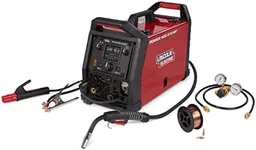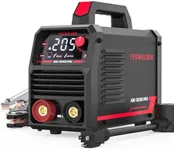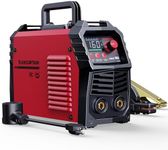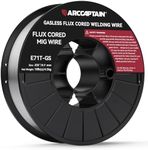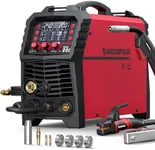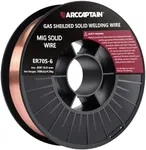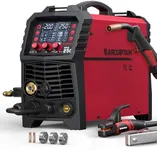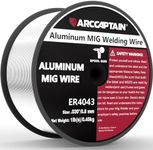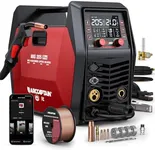Buying Guide for the Best Stick Welders
Choosing the right stick welder can make your welding projects easier, safer, and more enjoyable. Stick welders, also known as arc welders, are popular for their simplicity, portability, and ability to work well outdoors or on rusty materials. When picking a stick welder, it's important to consider the type of work you plan to do, the materials you'll be welding, and your experience level. Understanding the key specifications will help you find a welder that matches your needs and ensures good results.Amperage RangeAmperage range refers to the minimum and maximum current the welder can provide. This is important because different welding jobs and materials require different amounts of current. Lower amperage (around 40-80 amps) is suitable for thin materials and light repairs, while higher amperage (up to 200 amps or more) is needed for thicker metals and heavy-duty work. If you plan to weld a variety of materials, look for a welder with a wide amperage range. For occasional home repairs, a lower range may be enough, but for more demanding tasks, a higher range is better.
Duty CycleDuty cycle tells you how long the welder can operate continuously before it needs to cool down. It's usually given as a percentage of a 10-minute period. For example, a 20% duty cycle at 100 amps means you can weld for 2 minutes and then must let the machine rest for 8 minutes. A higher duty cycle is important if you plan to weld for longer periods without stopping, such as in professional or large projects. For short, occasional welds, a lower duty cycle is usually sufficient.
Input VoltageInput voltage is the type of electrical power the welder needs. Most stick welders run on either standard household voltage (120V) or higher voltage (240V) found in workshops. Some models can use both. If you only have access to regular outlets, choose a 120V welder. If you need more power for thicker materials and have access to 240V, consider a welder that supports it. Dual-voltage models offer flexibility if you might use the welder in different locations.
PortabilityPortability refers to how easy it is to move the welder around. This depends on the size, weight, and whether it has handles or wheels. If you need to carry your welder to different job sites or move it around your garage, a lighter and more compact model is ideal. For stationary work in a workshop, a heavier unit with more features may be acceptable.
Electrode CompatibilityElectrode compatibility means which types and sizes of welding rods the machine can use. Some welders are designed for specific electrode types or sizes, while others are more versatile. If you plan to work with different metals or need to use special rods, make sure the welder supports them. For general repairs, most basic welders will handle common electrodes, but for specialized work, check the compatibility.
Arc Stability and Ease of UseArc stability refers to how consistently the welder maintains the electric arc during welding. A stable arc makes welding easier and produces better results, especially for beginners. Some welders have features that help with easy arc starting and reduce sticking. If you're new to welding or want smoother operation, look for models known for good arc stability and user-friendly controls.
